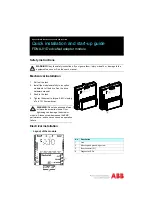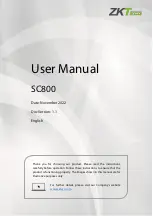
Micro-Air, Inc.
Page 14
EasyTouch 2.5 Operations Manual
Rev 1.0 8/27/14
9.5 Pump Sentry Fault (DX only, contributes to lockout count)
Displayed as “HIGH PRES FAULT”
The Pump Sentry Fault occurs whenever the Service sensor temperature exceeds the
Pump Sentry
parameter setting during compressor operation. See section 6.3 for more information on how to
install the optional Service sensor, and see section 11.2.5 for more information on how to enable and
set the temperature threshold for the Pump Sentry.
9.6 Lost AC Fault (DX Only, no lockout)
Displayed as “LOST AC FAULT”
The Lost AC Fault occurs whenever the EasyTouch detects that the AC line voltage has been lost
during compressor operation (i.e. a brownout condition). Brownout conditions can cause
compressors to stall very quickly (<50ms), so this detection protects the compressor by shutting down
the compressor relay output and waiting for the normal fault recovery delay before attempting a
compressor restart.
10. MENU AND SETTINGS OVERVIEW
The Main Menu is accessed from the Main screen by pressing the MENU button. The Main Menu consists
of 6 items on 2 pages (screens) as shown in Figure 9. All menus are hierarchically designed. All sub-
menus and the various parameter settings available are accessed starting from the Main Menu. All of the
parameter settings are stored in non-volatile memory and they are always retained, even when the battery
is removed. A unique set of parameter settings can be saved and recalled, or factory default settings can
also be recalled. Refer to sections 11.4, 11.5, and 11.6 for more information on memorizing and recalling
settings.
Figure 9
– Main Menu Display Screens
NOTE:
When the EasyTouch loses power, all of the parameter settings and the mode of operation
are retained indefinitely. When power is restored, the control resumes operation as last
programmed. The EasyTouch also has a battery to supply power to the real-time clock. If the
battery has completely discharged or has been removed, only the time and date settings will
be lost and will require resetting upon the next power up.
10.1 Menu Screen
All menu screens are constructed identically as shown in Figure 10. There are three large buttons to
choose from three sub-menu or parameter setting choices. Paging through the menu is possible by
using the DOWN ARROW button, and the current page number is always shown at the top. The
menu page will wrap around to page 1 again after the last page has been reached.















































